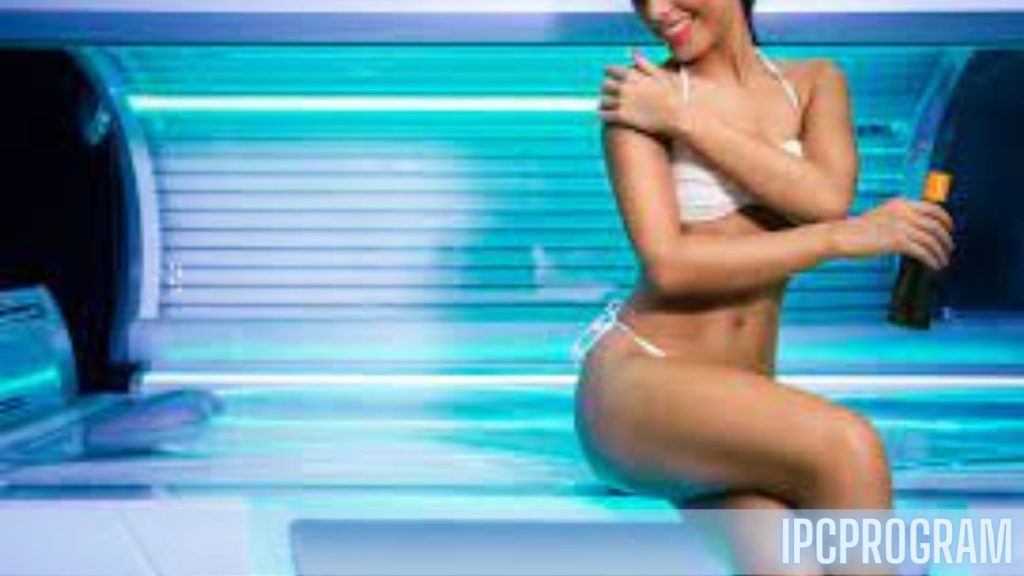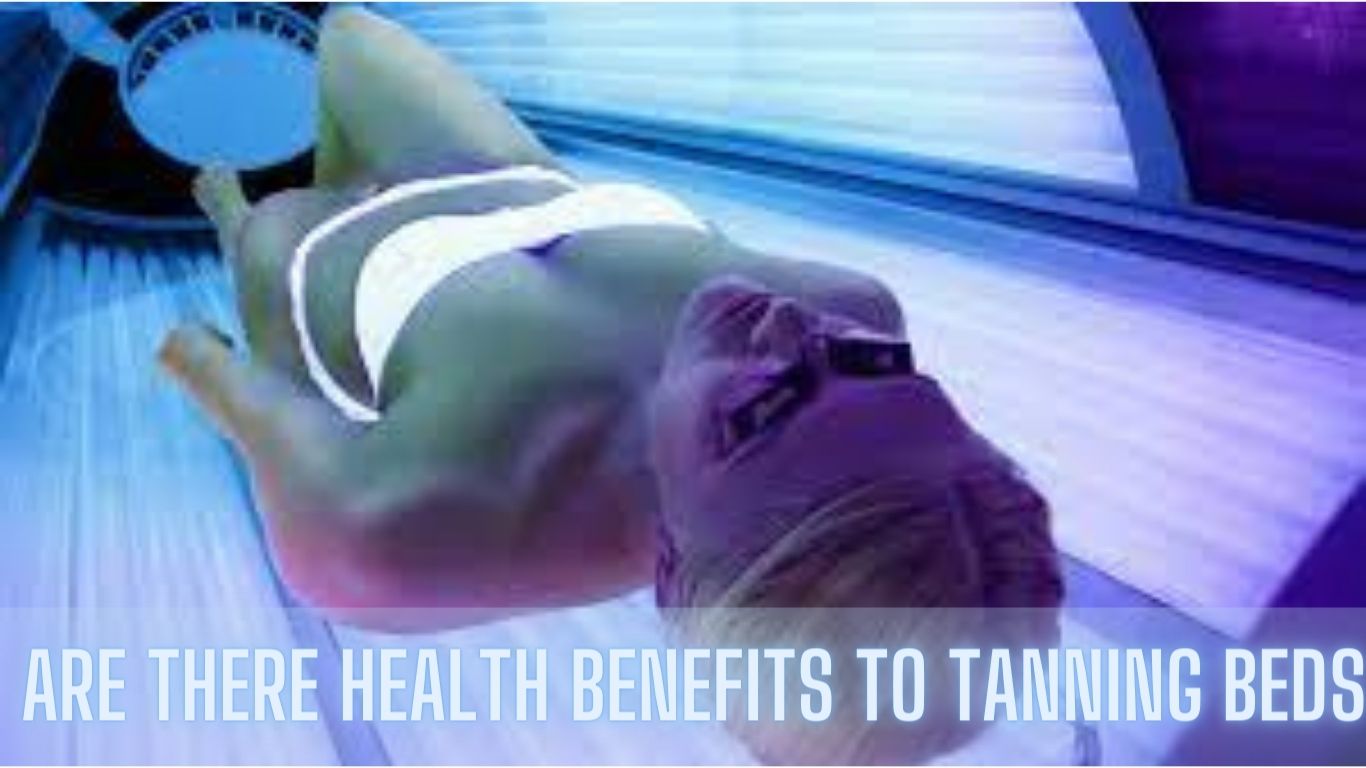Tanning beds – a topic that sparks both curiosity and controversy. Many people are drawn to the idea of achieving a sun-kissed glow all year round, while others raise concerns about the potential health risks involved.
But amidst this ongoing debate, one question remains: Are there any actual health benefits to using tanning beds?
In this blog post, we will delve into the world of tanning beds and explore the potential pros and cons they offer for your health.
So grab your shades and let’s uncover the truth behind the glowing allure!
Tanning Beds And Health: Understanding The Potential Benefits And Risks

When it comes to tanning beds, opinions are as diverse as the shades of bronzed skin they promise.
Some argue that using tanning beds can offer potential health benefits, while others express concerns about the risks involved.
Let’s dive into this controversial topic and explore both sides.
Advocates of tanning beds claim that exposure to UV radiation can stimulate vitamin D production in the body.
Vitamin D plays a crucial role in maintaining healthy bones, boosting our immune system, and even improving mood.
Soaking up some rays from a tanning bed during winter months when sunlight is limited may indeed provide an alternative source of this essential vitamin.
On the flip side, critics warn against the dangers associated with excessive UV exposure from tanning beds.
Prolonged or frequent use of these devices has been linked to an increased risk of skin cancer, premature aging, eye damage, and weakened immune function.
While some studies suggest that controlled UV exposure through tanning beds may help treat certain skin conditions like psoriasis or eczema by reducing inflammation, more research is needed to fully understand these potential benefits without compromising overall health.
It’s important to note that everyone’s response to UV radiation varies based on factors such as skin type and genetic predispositions.
Consulting with a healthcare professional before deciding whether to use a tanning bed can help you weigh the potential risks against any perceived benefits for your specific situation.
The Health Effects Of Tanning Beds: Weighing The Pros And Cons

Tanning beds have long been a controversial topic when it comes to their potential health effects.
On one hand, proponents argue that tanning beds can provide numerous benefits such as vitamin D synthesis, improved mood, and treatment for certain skin conditions.
However, on the other hand, critics raise concerns about the increased risk of skin cancer, premature aging, and damage to the immune system.
One of the main arguments in favor of tanning beds is their ability to stimulate vitamin D production in the body.
Vitamin D plays a crucial role in maintaining healthy bones and teeth and has also been linked to a reduced risk of certain diseases like multiple sclerosis and some types of cancer.
Moreover, some individuals claim that using tanning beds can improve their mood by boosting serotonin levels in the brain.
This may help alleviate symptoms of seasonal affective disorder (SAD) or simply enhance overall well-being.
Additionally, tanning beds are often recommended as a treatment option for specific skin conditions such as psoriasis or eczema.
Controlled exposure to ultraviolet (UV) radiation can help reduce inflammation and itchiness associated with these conditions.
Despite these potential benefits, it’s important not to overlook the significant risks associated with tanning bed use.
One major concern is an increased risk of developing skin cancer due to prolonged exposure to UV radiation.
Studies have shown that using indoor tanning devices before age 35 increases melanoma risk by 59%.
Another drawback worth considering is that excessive exposure to UV radiation weakens your immune system’s ability to fight off infections effectively.
Tanning Beds: Exploring The Controversial Relationship With Health Benefits
When it comes to tanning beds, opinions are divided. Some claim that they offer various health benefits, while others argue that the risks outweigh any potential advantages.
So, what’s the truth? Let’s delve deeper into this controversial relationship and examine both sides of the argument.
Proponents of tanning beds often highlight their ability to increase vitamin D levels in the body.
This is because exposure to UV rays triggers a natural production of vitamin D, which plays a crucial role in maintaining healthy bones and supporting immune function.
Additionally, some individuals find that using tanning beds can help alleviate certain skin conditions such as psoriasis or eczema.
On the other hand, critics raise concerns about the increased risk of skin cancer associated with tanning bed use.
The intense UV radiation emitted by these devices can damage DNA in skin cells and potentially lead to melanoma or other types of skin cancer.
Furthermore, prolonged exposure to UV rays can accelerate premature aging, causing wrinkles and sunspots.
It’s important to note that moderation is key when considering using tanning beds for potential health benefits.
Experts recommend limiting sessions and always wearing protective eyewear and sunscreen during use.
Conclusion:
The use of tanning beds is a controversial topic when it comes to discussing potential health benefits.
While some studies suggest that controlled exposure to UV rays can offer certain advantages, such as increased vitamin D production and improvement in certain skin conditions like psoriasis, it is crucial to weigh these potential benefits against the known risks.
Tanning beds have been closely linked to an increased risk of skin cancer, premature aging, and damage to the eyes.
The intense UV radiation emitted by these devices can penetrate deep into the skin, causing DNA damage and increasing the likelihood of developing malignant melanoma or other forms of skin cancer.
Prioritizing your long-term health should be at the forefront of any decision-making process regarding sun exposure or artificial means such as tanning beds.
Remember that embracing natural ways of acquiring vitamin D through moderate sunlight exposure while practicing proper sun protection measures remains one of the safest choices.
While there may be conflicting opinions on whether there are any substantial health benefits associated with using tanning beds responsibly.




